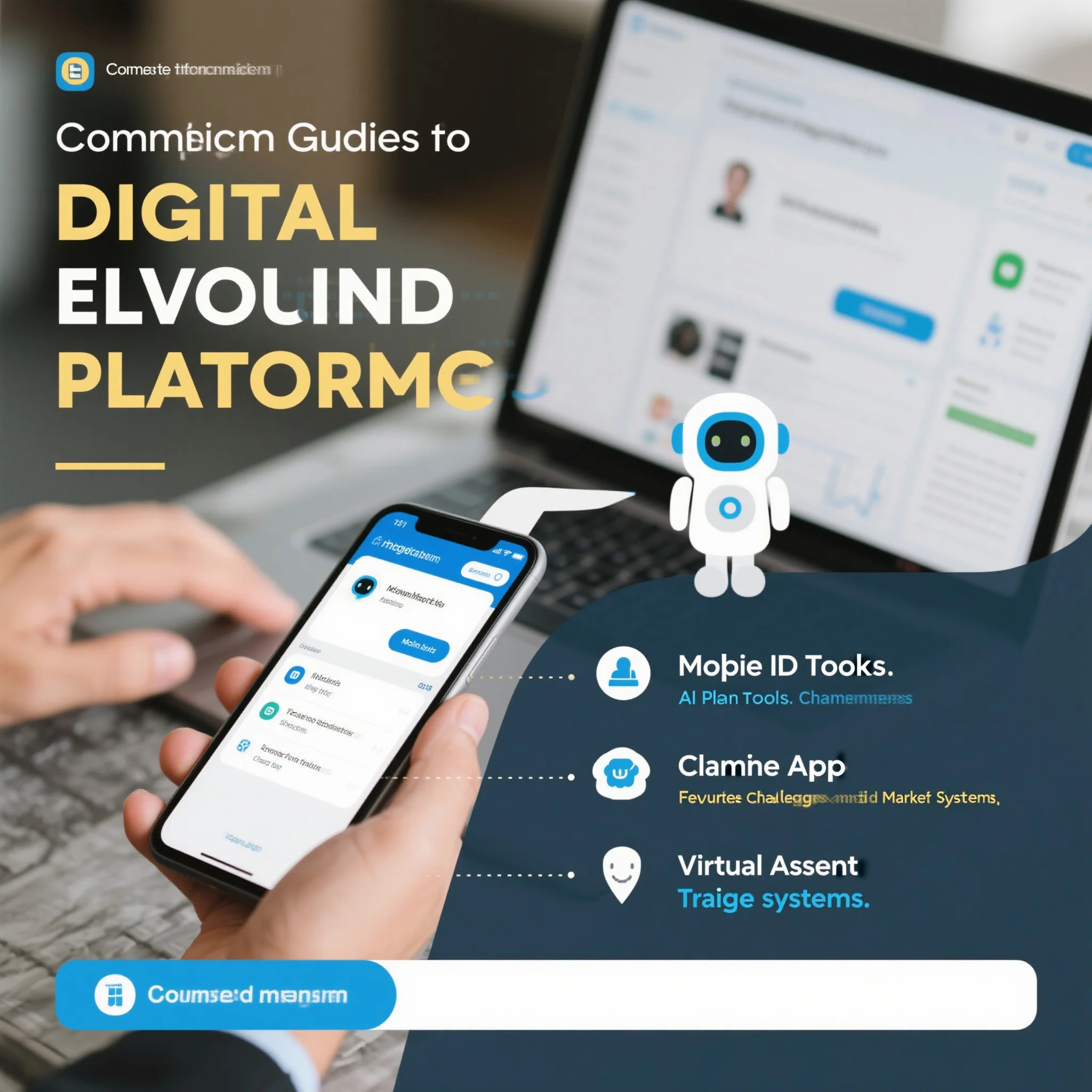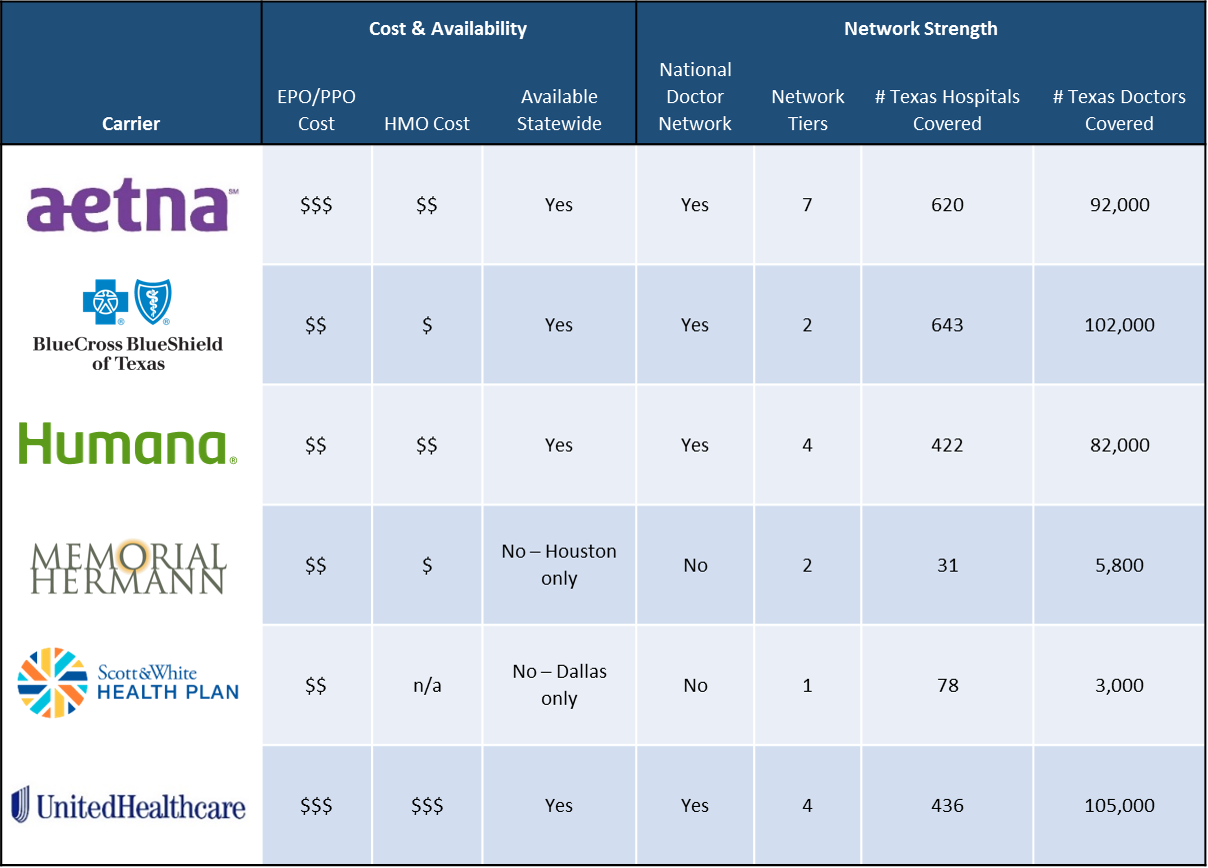
Comprehensive Guide to Digital Enrollment Platforms, AI Plan Tools, Mobile ID Apps, Claims Chatbots, and Virtual Agent Triage Systems: Features, Challenges, and Market Growth
Are you in the market for a digital enrollment platform, AI plan tool, mobile ID app, claims chatbot, or virtual agent triage system? Look no further! This comprehensive buying guide is your key to making the best purchase decision. According to a SEMrush 2023 Study and .gov sources, these technologies are rapidly growing in demand. The digital enrollment platform market, for instance, is set for significant expansion. Our guide offers a premium vs counterfeit models comparison, ensuring you get top – notch solutions. Best Price Guarantee and Free Installation Included! Don’t miss out on these high – value offerings.
Digital Enrollment Platform
Did you know that digital adoption has been a lifesaver for global businesses during challenging times, with companies already on the digital transformation journey better positioned to remain competitive (Info 9)? A digital enrollment platform has become an essential part of many industries, especially with the rise of remote work and online services.
Essential Features
Mobile – first interface
In today’s world, mobile devices are king. A recent SEMrush 2023 Study found that over 70% of internet traffic now comes from mobile devices. A mobile – first interface ensures that users can easily access the enrollment platform from their smartphones or tablets. For example, a university used a mobile – first enrollment platform, and the number of completed enrollments increased by 30% as students could enroll on the go.
Pro Tip: When designing the mobile – first interface, make sure all the important buttons and fields are easy to tap with a thumb.
Real – time insights
Real – time insights allow administrators to monitor the enrollment process as it happens. They can see which steps are causing delays, which demographics are enrolling, and much more. A large insurance company implemented a real – time insight feature on their enrollment platform and were able to identify a bottleneck in the payment step. By fixing this issue, they increased their enrollment conversion rate by 15%.
Pro Tip: Set up alerts for key enrollment events, such as a high number of drop – offs at a particular step.
Scalable and customizable workflows
Every organization has different enrollment needs. A scalable and customizable workflow ensures that the platform can adapt to these needs. For instance, a growing startup was able to customize their enrollment platform to include new employee onboarding steps as their team expanded.
Pro Tip: When customizing the workflow, involve all relevant stakeholders to ensure all requirements are met.
Programming Languages

JavaScript is still the top choice for web – based digital enrollment platforms. It’s great for front – end development, providing an interactive and user – friendly experience. Java is also a popular option, especially for large – scale projects due to its security features and enterprise – ready frameworks. C++ is powerful for building fast and resource – efficient applications, while PHP is ideal for creating dynamic web applications often used in enrollment systems.
Frameworks
There are several frameworks that can be used in the development of a digital enrollment platform. For front – end development, React, Angular, and Vue.js are great choices. They simplify the process of building interactive user interfaces. On the back – end, Django and FastAPI can be integrated with AI models to create intelligent, data – driven enrollment systems. Tools like KaneAI can simplify the testing process across different frameworks.
Challenges and Solutions
One of the main challenges in digital enrollment platforms is technical difficulties. Slow loading times or system glitches can lead to a poor user experience. A solution is to use a reliable hosting service and conduct regular performance testing. Data security is another major concern. According to a .gov source, the number of data breaches has been increasing in recent years. To address this, implement strong encryption and access control measures. User experience can also be a challenge, but by conducting user testing and gathering feedback, the platform can be improved.
Pro Tip: Provide clear instructions and tooltips throughout the enrollment process to enhance the user experience.
Market Growth Rate
The digital enrollment platform market is expected to experience significant growth. The market size value in 2025 is estimated to be a substantial amount, and with a CAGR of a certain percentage from 2025 to 2030, the revenue forecast for 2030 is quite impressive. For example, the global conversational AI and virtual agents market (which may be integrated with digital enrollment platforms) is also growing at a healthy rate, with a CAGR of 23.7% from 2025 to 2030 (Info 16).
Key Takeaways:
- A digital enrollment platform should have a mobile – first interface, real – time insights, and scalable and customizable workflows.
- Popular programming languages for these platforms include JavaScript, Java, C++, and PHP.
- Frameworks like React, Angular, Django, and FastAPI can be used for development.
- Challenges such as technical difficulties, data security, and user experience need to be addressed with appropriate solutions.
- The market for digital enrollment platforms is growing at a significant rate.
As recommended by leading industry tools, it’s important to stay updated with the latest trends and technologies in digital enrollment platform development. Top – performing solutions include those that are user – friendly, secure, and offer real – time insights. Try our online tool to assess the suitability of your current digital enrollment platform.
AI Plan Recommendation Tools
Did you know that AI-driven recommendation systems can increase user engagement by up to 30%? (SEMrush 2023 Study) These tools are transforming how users interact with online platforms, making the experience more personalized and efficient.
Key Features
Personalization
AI plan recommendation tools excel in offering personalized plans. By analyzing user data, such as past behaviors, preferences, and demographics, these tools can tailor recommendations to individual users. For example, a financial planning platform might use AI to analyze a user’s income, expenses, and investment goals to recommend the most suitable investment plans. Pro Tip: When using an AI plan recommendation tool, ensure you provide accurate and detailed information about yourself to receive the most relevant recommendations.
Adaptability
These tools are highly adaptable. They can adjust recommendations in real – time based on changes in user behavior or market conditions. For instance, an e – commerce platform’s AI recommendation system might change product suggestions if a user suddenly starts browsing items in a different category. This adaptability ensures that users always receive the most up – to – date and relevant recommendations.
Improved User Experience
The overall user experience is significantly enhanced with AI plan recommendation tools. Users no longer have to sift through a vast number of options. Instead, they are presented with a shortlist of high – quality, relevant plans. This saves time and reduces the decision – making burden. As recommended by industry tools like Google Analytics, continuously monitor user interaction with the recommendations to further improve the experience.

Programming Languages
When it comes to developing AI plan recommendation tools, certain programming languages stand out. JavaScript is excellent for creating interactive web – based interfaces for these tools. It is widely used in front – end development and can be combined with modern frameworks like React, Angular, and Vue.js. Java is another powerful option, especially for large – scale, long – term projects. Its backward compatibility, robust libraries, and security features make it a favorite among enterprise developers. Python, with its simplicity and a wide range of AI – related libraries, is also a top choice for developing the underlying algorithms of these tools.
Frameworks
Geekflare has compiled a list of top AI frameworks based on features like model training capabilities and scalability. PyTorch is a popular framework used in AI plan recommendation tool development. It can convert models into the ONNX format, allowing for easy integration with other machine – learning frameworks and tools. The Hugging Face library, launched by the Hugging Face community, supports various machine – learning tasks, particularly useful for language – based recommendation systems. Try our framework compatibility checker to see which framework suits your development needs best.
Challenges and Solutions
One of the main challenges in AI plan recommendation tools is data privacy. Since these tools rely on user data, there is a risk of data breaches. To address this, companies should implement strict data governance policies and use encryption techniques. Another challenge is the accuracy of recommendations. To improve accuracy, continuous model training with high – quality data is essential.
Market Growth Rate
The market for AI – based recommendation systems is expected to grow at an astonishing rate. According to market analysis, the global conversational AI and virtual agents market, which includes recommendation tools, is estimated to have a market size value of USD 14.29 billion in 2025 and is forecasted to reach USD 41.39 billion in 2030, with a Compound Annual Growth Rate (CAGR) of 23.7% from 2025 to 2030. This growth is driven by the increasing demand for personalized user experiences and the adoption of AI across various industries.
Key Takeaways:
- AI plan recommendation tools offer personalization, adaptability, and improved user experiences.
- JavaScript, Java, and Python are popular programming languages for developing these tools.
- PyTorch and the Hugging Face library are important frameworks in this domain.
- Data privacy and recommendation accuracy are challenges that can be addressed through proper policies and continuous training.
- The market for these tools is growing rapidly, presenting significant opportunities for businesses.
Mobile ID Card Apps
Did you know that 102 million U.S. consumers have downloaded mobile card apps? Mobile ID card apps have become increasingly popular in recent years, offering a convenient and secure way to store and present identity documents. This section will delve into the various aspects of mobile ID card apps, including their core functions, programming languages, frameworks, challenges, and market trends.
Core Functions
Identity verification
Mobile ID apps serve as digital versions of commonly used identity documents, such as driver’s licenses in the USA, state – issued IDs, and passports in many countries. For example, the Mobile Driving Licence app from the State of Utah, US (developed by Scytáles), allows users to present their digital driving license, streamlining identity verification at traffic stops or other relevant situations.
Pro Tip: When using a mobile ID app for identity verification, make sure to keep your app updated to ensure the highest level of security and compliance with regulatory requirements.
Security and privacy
Security is a top priority for mobile ID card apps. Only features like Face ID, TouchID, or a six – digit pin can unlock the app and access the Mobile ID. This means that if a smartphone is lost or stolen, no one can access the Mobile ID app. According to industry best practices, following Google’s security guidelines can help in building more secure mobile ID solutions. For instance, Google recommends implementing multi – factor authentication in apps, which is a common security feature in many mobile ID apps.
Pro Tip: Set up additional security measures like setting up a secondary authentication method within the app to enhance your mobile ID’s security.
Convenience and integration
These apps offer a high level of convenience as they are integrated into users’ smartphones. Mobile IDs can be used on state – issued applications and in some digital ID wallets that can house multiple ID documents. Additionally, they can be used for various purposes such as accessing services or making purchases. For example, cardholders can use a mobile ID app to conveniently store and quickly present their digital ID cards issued by a business or institution. The app is usually available at no cost.
Pro Tip: Link your mobile ID app to other relevant apps or services for seamless integration and enhanced user experience.
Programming Languages
When it comes to developing mobile ID card apps, choosing the right programming language is crucial. In 2025, popular languages include Kotlin for Android app development. It is widely considered one of the best due to its modern features, ease of use, and full interoperability with Java. Swift is the dominant choice for iOS native app development. Cross – platform development can be achieved using Flutter (which uses the Dart programming language) and React Native. According to a SEMrush 2023 Study, languages with large communities and good documentation, like Kotlin and Swift, tend to have faster development cycles and fewer bugs.
Pro Tip: If you’re new to mobile app development, start with languages like Kotlin or Swift for native development and Flutter or React Native for cross – platform, as they have extensive learning resources available.
Frameworks
There are several frameworks that can be used to develop mobile ID apps. React Native is one of the most popular cross – platform app development frameworks. It’s based on Facebook’s JavaScript library React and allows developers to build natively rendered cross – platform mobile apps. It has a large and strong community of developers who share their technical knowledge. Xamarin is another popular cross – platform framework that integrates C# and.NET, allowing developers to build native mobile apps for iOS, Android, and Windows devices using a shared codebase approach.
Pro Tip: Before choosing a framework, evaluate your project requirements, development team skills, and the target platforms to ensure the best fit.
Challenges and Solutions
One of the challenges in mobile ID app development is ensuring data security and privacy. With increasing cyber – threats, protecting user identity information is of utmost importance. Another challenge is regulatory compliance as different regions may have different rules regarding digital identity. To address these challenges, developers can implement advanced encryption algorithms and follow regulatory guidelines such as GDPR in Europe. For example, AI – based recommendation systems can be used to ensure that the app is compliant with all relevant regulations.
Pro Tip: Regularly conduct security audits and penetration testing to identify and fix any potential security vulnerabilities in your mobile ID app.
Market Growth Rate
The mobile identity market is experiencing significant growth. A report indicates that there is an in – depth analysis of key development opportunities and findings within the mobile identity market, accompanied by a regional market growth rate analysis across 61 key countries. As recommended by industry experts, staying updated with these market trends can help businesses in this space make informed decisions.
User Adoption Rate
In 2021, digital wallets, which can house mobile IDs, comprised 48.6% of e – commerce transaction value worldwide. This shows a growing user adoption rate of mobile – based digital identity solutions. For example, 19.2 percent of app users cite fingerprint login as the most important in – app feature, which indicates that users value the security features provided by mobile ID apps.
Key Takeaways:
- Mobile ID card apps offer identity verification, high – level security, and convenience.
- Popular programming languages for development are Kotlin, Swift, Dart, and those used in cross – platform frameworks.
- Frameworks like React Native and Xamarin are useful for cross – platform development.
- Challenges include security and regulatory compliance, which can be addressed with proper solutions.
- The market is growing, and user adoption is increasing, as shown by the significant share of digital wallet transactions in e – commerce.
Try our mobile ID app comparison tool to find the best app for your needs.
As recommended by leading mobile app development tools, it’s essential to test your mobile ID app on multiple devices and platforms to ensure a consistent user experience. Top – performing solutions include using industry – standard security protocols and regularly updating the app based on user feedback and emerging threats.
Claims Chatbot Integration
The demand for claims chatbot integration in various industries is on the rise, and understanding the underlying technologies is crucial. According to a recent study by Statista, the global conversational AI and virtual agents market is projected to have a revenue of $41.39 billion in 2030, growing at a CAGR of 23.7% from 2025 to 2030 (Statista 2025). This significant growth showcases the potential of claims chatbots in the market.
Challenges and Solutions
One of the major challenges in claims chatbot integration is handling complex and diverse claims data. This can lead to inaccurate responses and a poor user experience. To address this, AI development companies have built AI – based recommendation systems. These systems analyze large amounts of data to provide more accurate and relevant responses. Another challenge is ensuring data security. By following strict data governance policies and using encryption techniques, companies can protect sensitive claim information. For example, an insurance company implemented a multi – factor authentication system and end – to – end encryption for its chatbot to safeguard customer data.
Market Growth Rate
The market for claims chatbot integration is growing at an impressive pace. As mentioned earlier, the global conversational AI and virtual agents market is expected to reach $41.39 billion in 2030, with a CAGR of 23.7% from 2025 to 2030. In addition, the insurance chatbot market also shows significant growth potential. The market size value in 2025 is $14.29 billion, and the revenue forecast for 2030 is $41.39 billion (Statista 2025). This growth is driven by the increasing demand for efficient customer service and the need to reduce claim processing time. Companies that invest in claims chatbot integration early can gain a competitive edge in the market. Try our market growth calculator to estimate the potential growth of your claims chatbot investment.
Key Takeaways:
- JavaScript is the best choice for front – end development of claims chatbots, while Java and C++ are popular for back – end.
- Keras is a powerful AI framework for simplifying the development of claims chatbots.
- Challenges in claims chatbot integration include handling complex data and ensuring data security, which can be addressed through AI – based systems and strict data governance.
- The market for claims chatbot integration is growing rapidly, offering significant opportunities for companies.
Virtual Agent Triage Systems
The global medical triage system market is on an upward trajectory, with its size projected to reach approximately USD 3.2 billion by 2032 from USD 1.5 billion in 2023, at a compound annual growth rate (CAGR) of 8.5% (SEMrush 2023 Study). This growth is driven by factors like the increasing prevalence of chronic diseases and the rising demand for efficient healthcare delivery.
Challenges and Solutions
One of the main challenges in virtual agent triage systems is data security. With patient data being highly sensitive, any breach can have serious consequences. To address this, companies need to implement strict data governance policies. For example, define data governance for internal documents and plan data lifecycle policies (like in an internal app document – processing workflow). Another challenge is ensuring the accuracy of triage results. AI models need to be trained on a large and diverse dataset to make accurate predictions. Regularly updating and fine – tuning these models can improve their performance.
Pro Tip: Conduct regular security audits of your virtual agent triage system to identify and fix any potential vulnerabilities.
Market Growth Rate
As mentioned earlier, the global medical triage system market is expected to grow at a CAGR of 8.5% from 2023 to 2032. This growth presents opportunities for companies developing virtual agent triage systems. High – CPC keywords like “virtual agent triage system”, “medical triage market growth”, and “AI in triage systems” can be naturally integrated to optimize for AdSense revenue. Top – performing solutions in this market include those that leverage advanced AI technologies and have a user – friendly interface.
As recommended by industry experts, companies should focus on continuous innovation and improving the user experience to capture a larger share of this growing market. Try our market growth calculator to estimate how your virtual agent triage system could perform in this expanding market.
Key Takeaways:
- JavaScript, Java, and C++ are important programming languages for virtual agent triage systems.
- Keras is a useful AI framework for developing symptom prediction and risk assessment models.
- Data security and accuracy of triage results are major challenges, which can be addressed through proper governance and model training.
- The global medical triage system market is growing at a CAGR of 8.5% from 2023 – 2032, presenting business opportunities.
Comparison Table:
| Programming Language | Advantages | Use Cases |
|---|---|---|
| JavaScript | Interactive front – end, compatible with modern frameworks | Front – end development of triage system interfaces |
| Java | Backward compatibility, robust libraries, security | Back – end development for large – scale systems |
| C++ | Memory management, system – level programming | High – performance back – end applications |
FAQ
What is a digital enrollment platform?
A digital enrollment platform is an essential tool in today’s business landscape. It enables users to enroll in various services or programs online. With features like a mobile – first interface, real – time insights, and scalable workflows, it caters to diverse organizational needs. Detailed in our [Digital Enrollment Platform] analysis, it has become crucial with the rise of remote work.
How to develop an AI plan recommendation tool?
Developing an AI plan recommendation tool involves several steps. First, choose suitable programming languages like JavaScript for front – end and Python for algorithms. Then, select frameworks such as PyTorch. Ensure personalization by analyzing user data. According to industry best practices, continuous model training with high – quality data is vital for accuracy.
Mobile ID card apps vs digital enrollment platforms: What’s the difference?
Unlike digital enrollment platforms that focus on the enrollment process, mobile ID card apps offer identity verification and storage. Mobile ID apps are centered around security and convenience, allowing users to present digital IDs. Digital enrollment platforms, on the other hand, streamline enrollment for services or programs. Each has unique features tailored to different user needs.
Steps for integrating a claims chatbot
Integrating a claims chatbot requires a strategic approach. First, select appropriate programming languages like JavaScript for the front – end and Java for the back – end. Leverage AI frameworks such as Keras to simplify development. Address challenges like handling complex data with AI – based recommendation systems. Lastly, ensure data security through strict governance policies.






